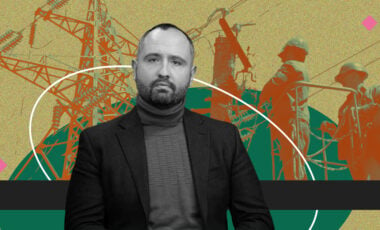Ukrainian tech cluster Brave1 unveils remote demining complex

Photo: Telegram / Fedorov
BRAVE1, a defense tech development cluster created by Ukraine's Ministry of Digital Transformation, Ministry of Defense, the Ukrainian forces, and other profile departments, presented a newly developed demining platform, Ratel Deminer.
According to Digital Minister Mykhailo Fedorov, the Ratel Deminer mine detector has been recognized as a priority development for the security and defense Forces, Rubryka reports.
What's the problem?
In September 2023, Prime Minister Denys Shmyhal stated that around 174,000 square kilometers of land in Ukraine potentially remain mined. This vast territory could take decades to clear, but Ukraine's goal is to accomplish this task within the coming years.
According to Serhii Reva, Head of Humanitarian Demining at the State Emergency Service, experts managed to reduce the potentially contaminated explosive area by 18,000 square kilometers by late February 2024. Currently, the contaminated area stands at 156,000 square kilometers, approximately 25% of the country's total size.
The Ministry of Defense reported that 287 civilians, including 15 children, died as a result of mine explosions, and 641 individuals, including 77 minors, were injured. Unfortunately, sappers often become casualties as well during demining operations.
What's the solution?
The Brave1 cluster participants have dedicated a lot of attention and time to developing remote demining systems to clear the mined territories and save the lives of mine action operators.
"Ratel Deminer is a mine detector that finds and neutralizes anti-personnel mines, operating remotely, thus saving soldiers' lives," the statement said. "The complex is equipped with a daylight camera to enhance control. Ratel Deminer destroys PFMs-1, PMNs-4, PMNs-3, and PMNs-2 mines."

Ukraine presents D-21 combat robot that can assist with assault operations and reconnaissance
How does it work?
Developers have already conducted tests of Ratel Deminer in real conditions, using the complex for humanitarian demining of anti-personnel mines near Sviatohirsk in the eastern Donetsk region.
According to Fedorov, Ratel Deminer has received the BRV1 status, indicating that its development has been identified as a priority for Ukraine. Currently, the complex is being further improved, and its capabilities are being expanded.
Earlier, the same team of engineers also codified ground-based robots Ratel S and Ratel, which are already actively used in the military.
Overall, since April 2023, Brave1 defense technology cluster participants have received $3 million in grants for their developments.
"The defense technology cluster has received 173 grants valued at $3,045,000 for developers creating defense innovations. These technologies strengthen the military, save lives, and give the Defense Forces advantages on the battlefield," Fedorov reported.
According to Fedorov, the most funding was allocated to developers of ground-based robotic platforms and drones — 54 and 30 projects, respectively.
The 2024 budget allocates ₴1.5 billion for Brave1, with grant amounts increasing to $10,000–$200,000.
Background
Ukraine launched Brave1, a unified coordination platform in the defense tech field, in April 2023 to develop military technology.
Earlier, the Brave1 presented one of the prototypes of underwater drones. Currently, several versions of such drones are being developed in Ukraine.
The cluster started testing the "Liut" combat robot in Ukraine. It allows tasks to be performed remotely, potentially saving the lives of Ukrainian defenders.
The Ukrainian cluster Brave1 has also created a new ground-based kamikaze robot, Ratel S, capable of hitting enemy targets from a safe distance.
"Soldiers use it as a mobile warhead carrying anti-tank mines or a combat module. Thanks to the technology, the operator can detonate an enemy tank or bunker from a safe place," the digital minister explained.




















































